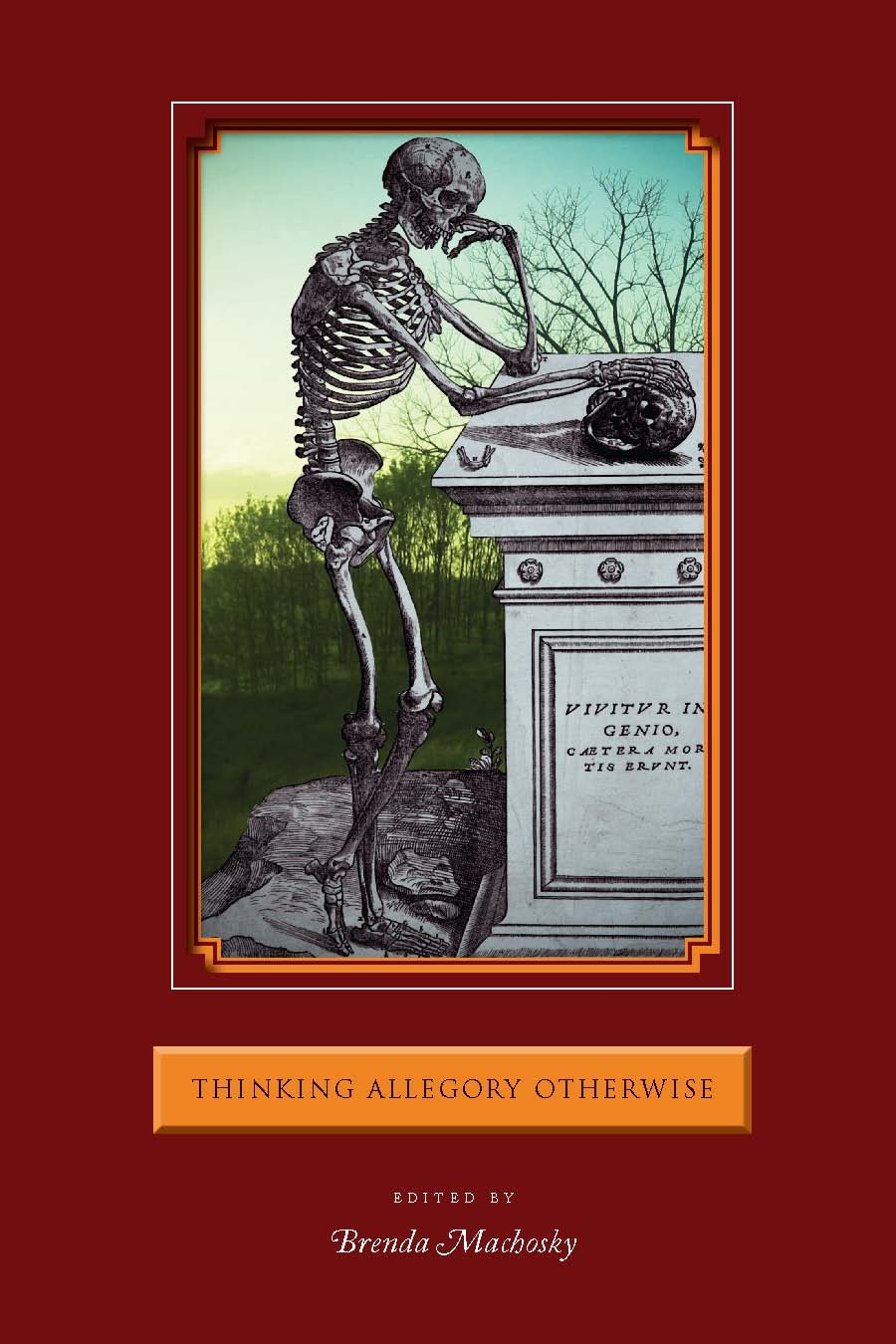ANGUS J. S. FLETCHER
1
As Renaissance authors used to say, allegory is the captain of all rhetorical figures of speech, and we might ask, Is it a ship of fools or a dreadnought? Certainly this figure of false semblaunt commands a large percentage of the worlds symbolic activity, mainly because it permits the iconic rendering of power relations. Realism in fiction, history, and journalism may seek the inherent power connection of allegory, as we know from its structural properties, especially its demonic agency and cosmic range. The key to understanding how allegory works is to focus on its mode of agency, and here we find that from ancient times to the present, under varying guises, the demonicnot necessarily badis the embodiment of primordial agency; the daimons of Greek myth have a unique power to act without impediment, obeying a system of absolute, single-minded, purified intention. By
This essay is reprinted, with slight revisions. See Angus Fletcher, Allegory without Ideas, in boundary2 , volume 3, no. 1 (Spring), pp. 7798. Copyright, Duke University Press. All rights reserved. Used by permission of the publisher.
radically simplifying purpose, the allegorist looks at life as if it were a game of getting and exploiting power. This confers on the method a vast general relevance, while other broad modalities do not have either this semiotic depth or this culturaland significantly religioususage. Even prophecy and typology in biblical interpretation lack the allegorical scope.
If iconologies of power are the issue, it must follow that we cannot understand the languages of politics and their rhetoric until we understand the allegorical method. It makes no difference what particular political order is in place; the defining allegorical structures will operate and will convert to the new situation, whenever a major political or cultural change of manifold occurs. Let us for reference purposes consider a rough rhetorical definition: Allegory is a method of double meanings that organizes utterance (in any medium) according to its expression of analogical parallels between different networks of iconic likeness. In setting up its correspondences between a certain story, lets say, and a set of meanings (the significatio of medieval exegesis), the method usually gives a vague impression of system. As rhetoricians ancient and modern perceived the process, a particular allegory will be either a composition or an interpretation based on a correspondence between images and agents (actions and the impressions they make) falling on one side of a wall of correspondence. Allegorical narratives, say a biblical parable or an Aesopian fable such as Animal Farm , lead us to imagine a set of meanings located on the other side of this hermeneutic wall. In political and cultural terms, these meanings lying on the other side of the wall comprise parts of the whole of an ideologyits commentary and interpretation.
Because allegory is a mix of making and reading combined in one mode, its nature is to produce a ruminative self-reflexivity. A large-scale allegory such as The Divine Comedy tends always to ruminate on its own levels of meaning, its own hermeneutic imperative, in a fashion we do not encounter, for example, with realism as in the novel or in historical writing. Self-reflection is obsessively an aspect of the allegorical method itself; that is, allegory works by defining itself in its enigmatic use. The motto of the mode might well be the line from Shakespeares Sonnet 64, on time and the poets destiny: Ruin hath taught me thus to ruminate. The rumination focuses on symbolic activity occurring on both sides of an interpretive barrier. If my rather too solid wall metaphor holds, there is in allegory something odd about the wall; each side seems cognizant of the others activity, but each needs to accept that a semiotic barrier of some kind intervenes between story and significance. For centuries it was common to think of allegory as the semiotic medium for enigmatic thoughts.
Two attributes of a basic ritual processthe traditional use of the interpretive guidewill illuminate this process, whereby interpretation is darkly enclosed within the boundaries of the fiction itself. Following this tradition of the interpretive guide, in The Divine Comedy Virgil and Beatrice accompany the narrator Dante; in The Pilgrims Progress a variety of friends counsel Christian on the meaning of his journey. Thus, in The Divine Comedy , the poet is shown the enigmatic meaning of his travel though the other world, meeting strange or strangely familiar persons from history or vision. These encounters constitute Dante the narrators experience of the state of souls after death, and they create in the reader a powerful curiosity and desire to interpret each step of the mysterious journey. So also in John Bunyans great Protestant work, Christian (and later his wife, Christiana, and their children) travels on a progress from temporal defeat to resurrection, and all along the way the story suggests ideas of trial, choice, hope, and fear attending that journey. Particular moments and events stem from a larger vision, in this case the virtually cosmic idea of a Christian life. Story and idea, both sides rather complex, are twinned along the journey. This ingemination, as a Renaissance poet would call it, amounts to a belief that creation and interpretation are doubles of each other; they need each other. If a poet writes an allegory, the resulting poem apparently invokes and then controls its own interpretation. In a modern science fiction novel, Walter Millers A Canticle for Leibowitz , the interpretive guiding principle is inherent to the discovery of Leibowitzs banal shopping-list relic, a discovery made not casually but by a member of a desert religious order.











